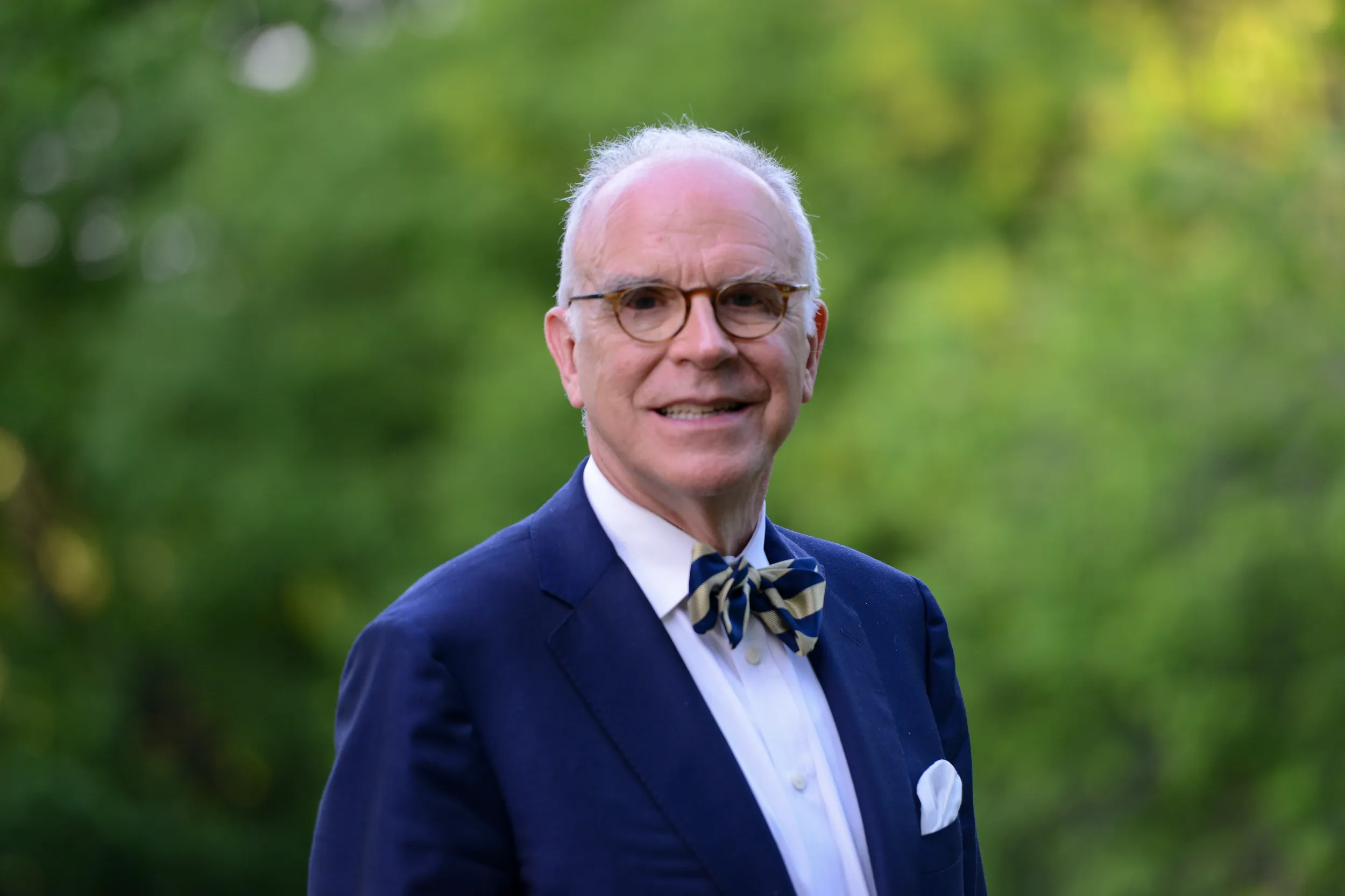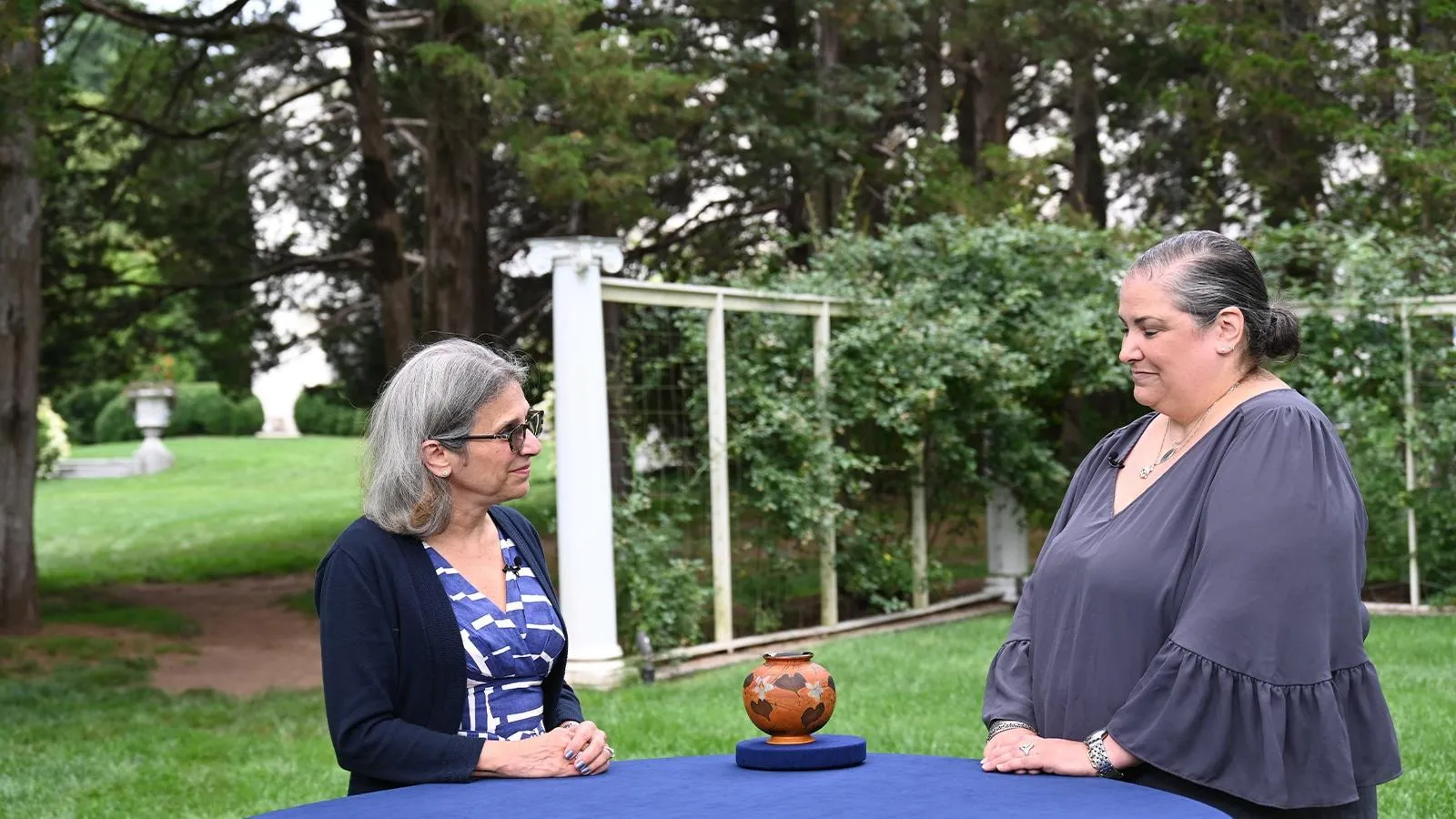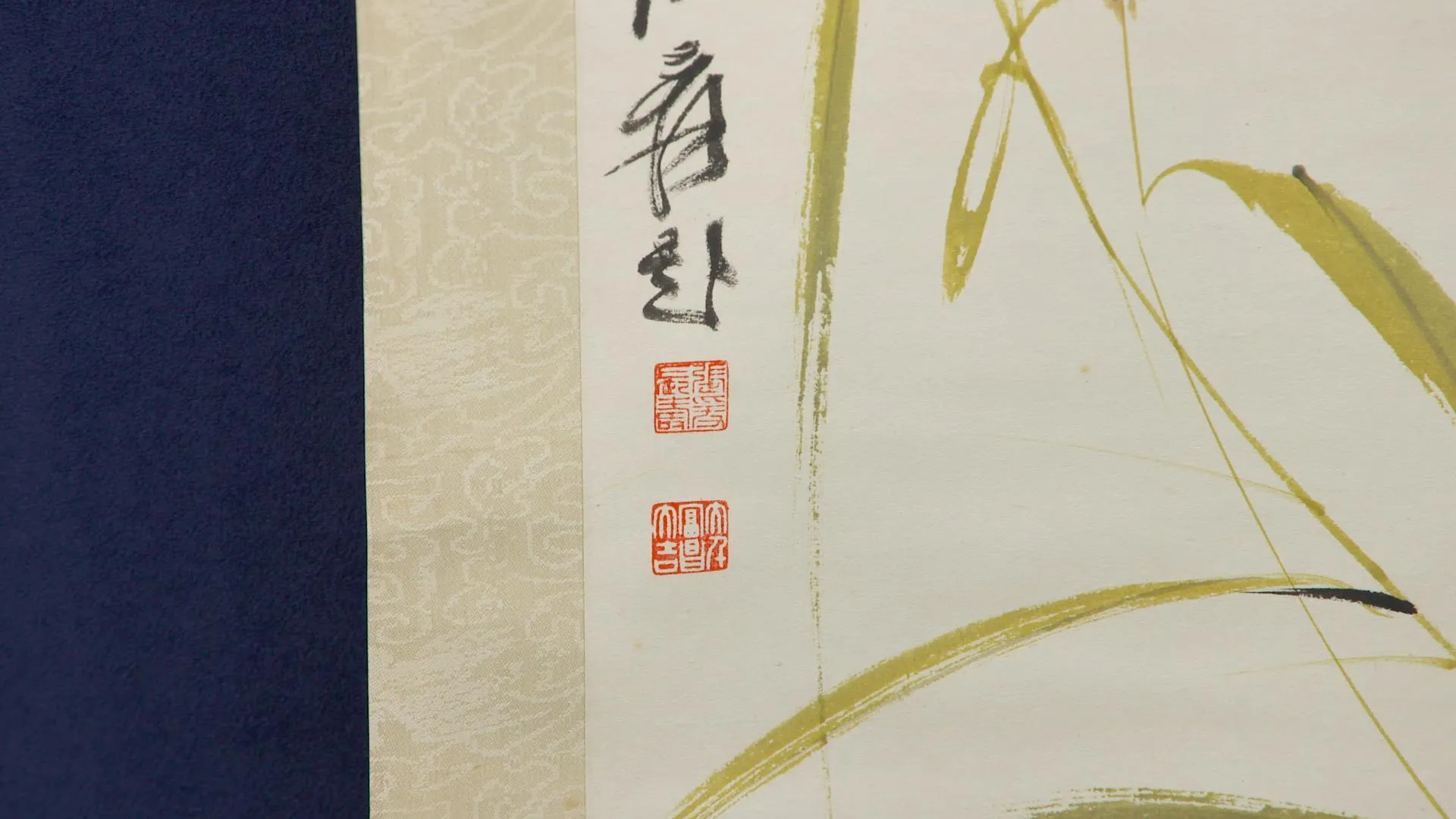GUEST: It's about 60 years old. And it's the collaboration of two different artists. My father, Charles Chu, painted the painting, and this is his inscription. This larger, longer inscription is done by a much more famous artist, a guy named Zhang Daqian. My father was a professor at Yale University. He spent his career teaching
Chinese language. Zhang Daqian came to Yale University several times to give lectures about painting. One evening, Zhang Daqian came to either my father's house or another Chinese friend's house, and they had the whole evening together,
painting pictures and telling stories, and I'm sure it was one of my father's most wonderful evenings. He, he came from China in 1945 and intended to go back to China, but the Bamboo Curtain came down, he was not able to go back, and so he was stranded here, and this painting with Chinese colleagues was really so meaningful to him as a way to connect to the homeland that he could not go back to.
APPRAISER: Zhang Daqian would be like having someone who sings in the church choir invite Pavarotti to dinner.
GUEST: (laughs)
APPRAISER: He had been invited to do an exhibit in France in 1956. And as part of that exhibition, people thought it would be a great idea for the master of Chinese
painting, you know, the Picasso of the East, Zhang Daqian, to meet Picasso, the master artist of the West of the 20th century. And the two of them met!
GUEST: I gather this is part of the Chinese literati tradition.
APPRAISER: Zhang Daqian reveled in this. He had a beard, big, long, white beard, and wore robes, and purposely wanted to bring about that kind of association with the literati, and the literati were these people who were, in our parlance would be Renaissance men, who could, who mastered all the arts and just could have wonderful conversations and banter back and forth over an evening, and then create a work of art that was unique for that moment.
GUEST: Yeah.
APPRAISER: And that was what this is, and so Zhang Daqian, in the midst of this,
decides to write something, and that's what the calligraphy is. But the way the calligraphy is done, some of this is a little bit opaque.
GUEST: Okay.
APPRAISER: It's a little hard to read some of the characters. We can glean from it the meaning, which essentially is, what he was saying that, there is this wonderful fusion, he calls it "physick," between the brushwork, the subject matter, and the way that all the thought that went to it is all brought together, and it has created this unique, beautiful work of art from this time that we've gathered together. What I hear was that he was looking at your dad as not somebody who was just this guy who is wanting to come visit the master, but as somebody who was an equal.
GUEST: (inhales deeply) That's wonderful to hear. Uh I'm just so excited and, gosh, I'm just touched.
APPRAISER: One of the challenges is that your dad was a great artist. It's just that he did not enter the commercial realm.
GUEST: Exactly, exactly.
APPRAISER: And in terms of an auction sale, no one can predict what this will do. And I would say that somewhere between $10,000 and $20,000 would be a reasonable estimate for this. I would think for insurance purposes, somewhere in the $20,000 range.
GUEST: Well, thank you so much for that information.










